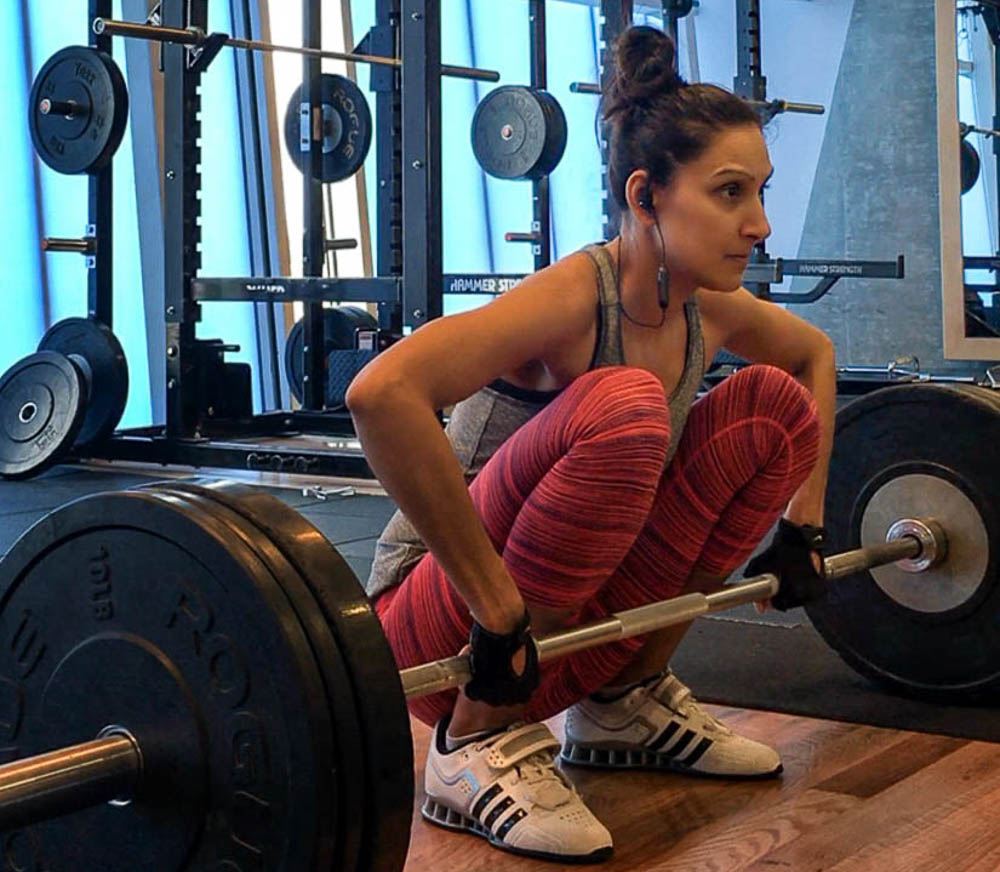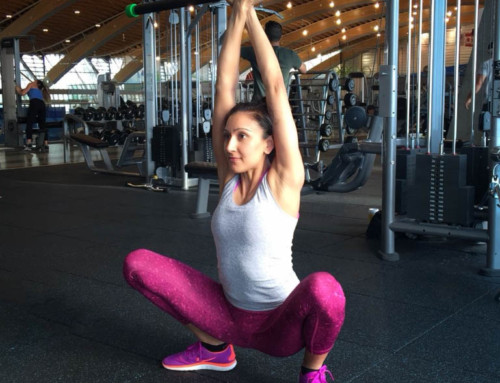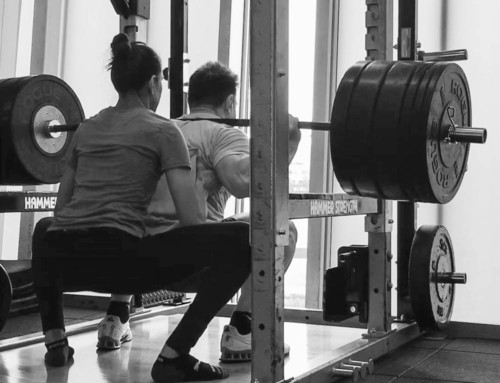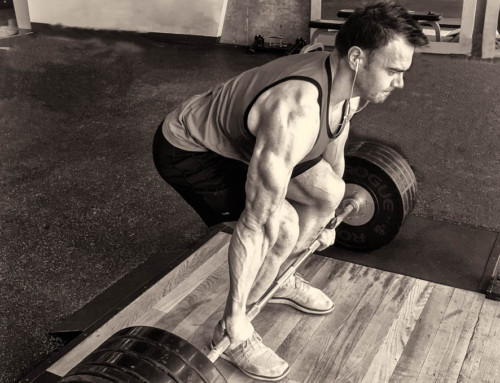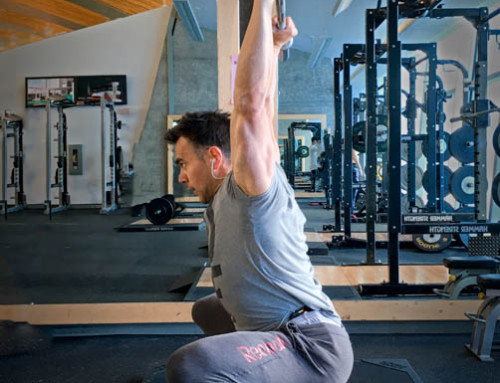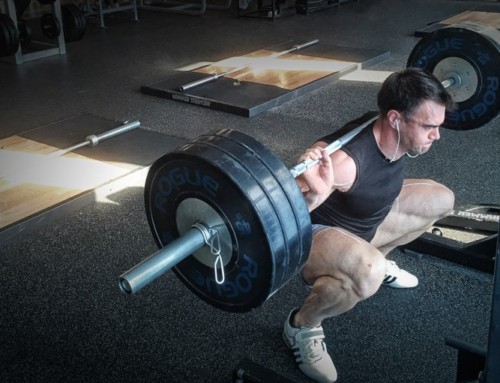Besides looking cool in the gym by pulling and pushing barbells, weightlifting is the most effective physical activity for achieving any fitness goal, and doing so in record time. We’re not talking about the catch all phrase “resistance training” but, lifting big, heavy weights repeatedly.
For unbeknown reasons, weightlifting and women is often surrounded by confusion, cautions and very odd presumptions, including hormone fluctuations, to suddenly becoming excessively muscular simply by touching a pair of heavy dumbbells. However, these tales can not be further from the truth. Women’s physiology presents a complex machine that is strong, durable, capable of withstanding great pressures for extended periods of time, while recovering from such stresses faster than male counterparts. So essentially, every woman has a genetic disposition to be a Wonder Woman.
Strength comes through intensity, and once we accept this fundamental fact, we can then begin the journey towards building body systems, raising brain function, balancing hormones, and increasing metabolic activity. Heavy weights push the body further forcing greater effort from every contributing process, and thus often the most popular method of achieving success fast. In this article, we’ll discuss reasons as to why women should walk past the treadmill, and establish their dominance around the squat rack.
1. Build Strength Faster
Big weights build strength, and they build it fast. Strength is an ability to produce work, and is the foundation towards developing other skill sets such as speed, endurance and power. These skills not only improve athletic performance but make everyday physical activities a breeze. Another bonus, the stronger you are, the leaner your physique becomes. This happens through phenomenon known as Supercompensation—where the body replenishes and repairs itself after a heavy/hard training session. To bank roll this expensive proposition, the body raises overall metabolism and releases fat burning hormones, using triglyceride (fat) stores as currency. So, you are burning your fat deposits while sculpting and repairing damaged muscle tissue.
Training with heavy weights, not only conditions muscles, but also improves brain activity. By using higher intensities, the central nervous system (CNS)—which engage motor units (MUs) to a greater degree both metabolically and neurologically—producing stronger contractions in coordinated manner. High intensities require activation of the largest MUs responsible for big, powerful fast twitch muscle fibers. By working harder, other body systems improve as well through greater metabolic flexibility, improved cardiovascular flow and higher endocrine sensitivity. The muscles themselves also become stronger through size and synergy. Individual fibers within the muscle (intramuscular coordination) as well as between different muscles (intermuscular coordination) work together to produce force more efficiently. As the result, compound lifts like squats, deadlifts, presses and pulls become a familiar and smoother process due to greater neural drive and muscular engagement.
2. Build a Leaner Body
Heavy loads produce extensive microtrauma of muscle fibers. Through supercompensation, these fibers are repaired and/or rebuilt to bigger versions capable of handling more physical stress.
Having more muscle increases overall metabolic rate, as muscle is a more active tissue requiring more energy and upkeep. With time, consistent training and nutrition, the body steadily transforms into a fitness-like physique, decreasing the waistline and improving overall aesthetics.
Now, improving muscle mass will not turn you into uber muscular bodybuilder, that is a fact. Even men who train for such goals, exercise and diet in extreme fashion, and keep up such schedule for years. Lets also not forget, that to achieve these oversized muscular goals, men often if not always use pharmaceutical grade supplements, aka anabolic steroids. These drugs skyrocket production and secretion of testosterone and growth hormone levels hundreds times higher than normal. Females naturally possess less muscle mass, and produce far less testosterone than standard male levels, which will not result in any steroid-like muscle growth from heavy weight lifting. The facts, women who dabble in the iron game often build long and lean muscle with greater definition, producing the sculpted “fitness model” appearance.
3. Burn more Fat
Whoever advocates that cardio equipment burns fat, has never pressed or pulled anything heavy. Cardio engages energy systems and does burn calories but, that stops shortly after you get off the treadmill or an elliptical machine. If you want the ultimate fat burner, look no further than a standard barbell, set of old fashion kettlebells or dumbbells. Weight training falls within anaerobic exercises producing far greater stimulus on the nervous and the musculoskeletal systems than a standard aerobic respiration cardiovascular activity. By using heavy loads, the body engages numerous systems, elevating energy supplies (sugars and fats) to fuel muscular contractions and resist applied forces.
The caloric consumption continues well after weight lifting session is finished, as the body quickly switches gears into recovery in order to bring itself back to new (raised) metabolic baseline. This is an extensively researched response called excess post exercise oxygen consumption (EPOC); where the body accelerates its repairs through using more of stored energy. With plenty of oxygen in the system, the body burns fats (through aerobic respiration) fuelling majority of such biochemical reactions. This is where women benefit once again, through their efficient fat metabolism which was carved out through evolution itself; building muscle at the expense of fat loss.
4. Fight Osteoporosis
Lifting heavy produces adaptations across the body which protect us in the long run. These adaptations not only occur within muscles but also improve connective and bone tissues. By using heavy weights, the body produces more osteoblasts, strengthens and remodels bones, tendons, ligaments and collagen. This is a hot research area which shows, heavy weight training to not only maintain but build new bone mass. These results have been noted in both older generations as well as in post-menopausal women—both osteoporosis categories.
5. Build Confidence
We’ve seen many people in the gym, especially women who walk by the free weight section, looking in with curious faces but never stopping, not even out of curiosity. The reasons for not training heavy are many including “too old or weak”, “don’t know where or how to start”, “need to lose fat first, before weight training”, “don’t want to get too big or muscular”.
In reality, any new endeavour is intimidating, at least in the beginning. Free weights require greater control, concentration and effort than a standard stationary bicycle. However, if you decide to enter the iron arena, the two most important things to remember are that everyone follows progressive overload, and everyone was once a beginner just like you.
Every training program follows the same principles made of consistency, technique and practice of basic movements. As things become less intimidating, you begin to steadily overload your chosen exercises in small increments by raising overall work capacity. Steady progress plays positive notes in terms of physical performance, appearance and belief. This belief in yourself and your abilities produces confidence which grows and continuously applied in gym endeavours and other parts of life.
6. Improve Health and Prevent Injury
As we get older, the body begins to naturally lose muscle tissue, creating a feeling of weakness and lack of energy. Maintaining strong and lean body mass improves balance and mobility. Stronger body naturally decreases potential for injury, or minimizes the extent during an accident. As previously mentioned, heavy weights engage more of body’s systems producing efficiency and coordination, improving muscular activation especially of the trunk and posterior chain. This means all the deep core muscles, abdominals and all muscles of the back, hips and legs continuously practice physical stress, improving overall posture and balance.
Being an active tissue, muscle mass has also been attributed with protective properties for health, including greater survival from cancers. More muscle equals grater bone density, thus limiting the risk of osteoporosis. Muscle tissue also improves insulin sensitivity linking to decreased risks of heart disease, obesity, diabetes or other metabolic syndrome disorders.
Final Thoughts
Strength training is for everyone, from young children to older folks, and anyone who is experiencing physical symptoms of various metabolic and physiological conditions. First and foremost, always check with your doctor before starting any training regime.
Lifting heavy weights have been extensively studied in older and post-menopausal women demonstrating significant health and fitness benefits. Everyone is capable of training, with understanding the goal of each exercise and training within their capacities. Keep it simple, keep it progressive and keep it consistent.
Women are strong by design and primed for endurance. By using heavy weights, females can catalyst their progress and achieve set fitness goals in record time. So ladies, do not be concerned with mysteries of being fragile creatures, and focus on facts described by science. Let us leave you with one of our favourite quotes, “Our deepest fear is not that we are inadequate. Our deepest fear is that we are powerful beyond measure” — Marianne Williamson.
We hoped you enjoyed this article, if so, please share it on your favourite social media so, we can get on google’s radar. Fell free to leave us a comment and start a discussion on the topic.
If you are looking to build strong, lean and beautiful shoulders be sure to check out our training books:

